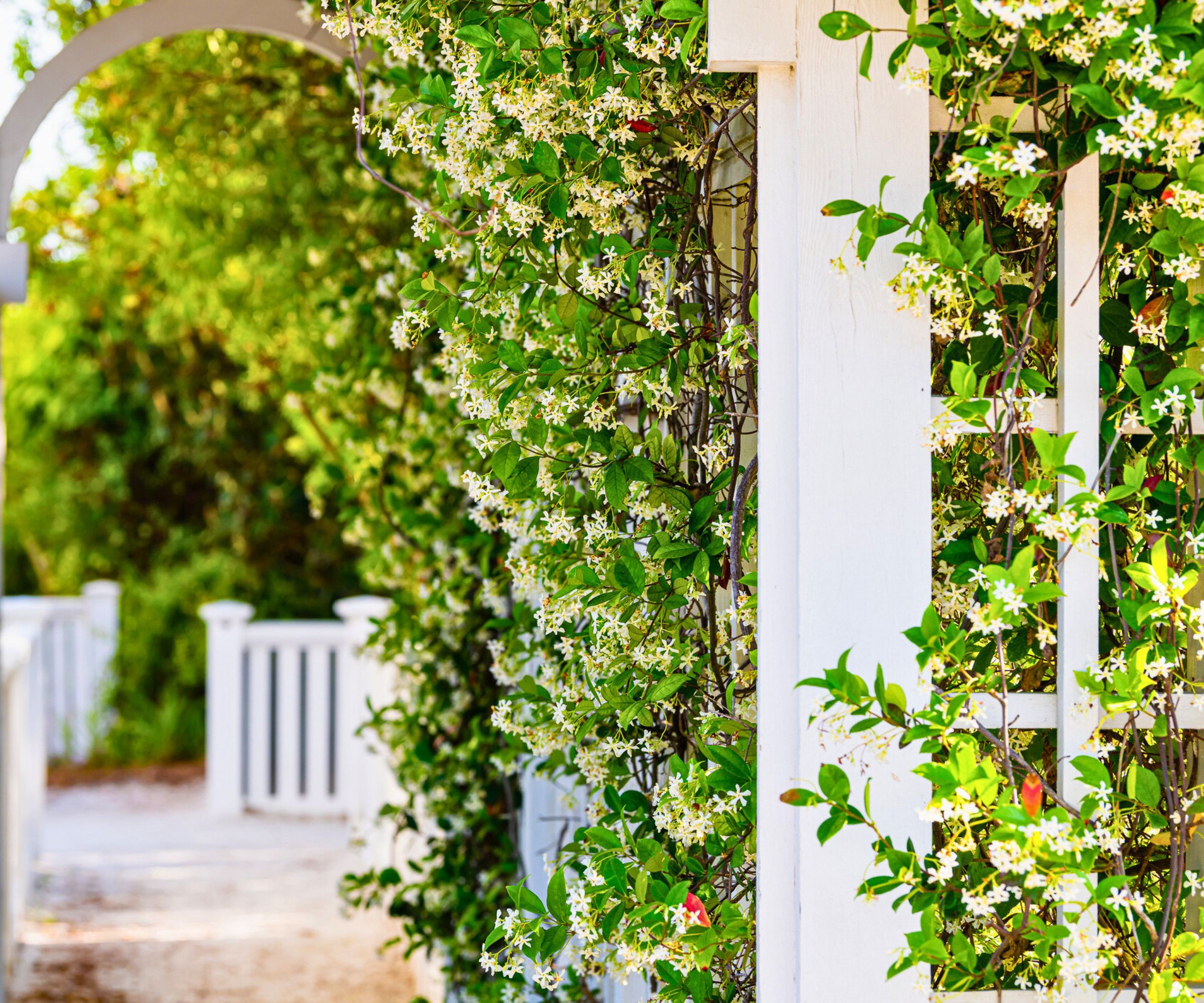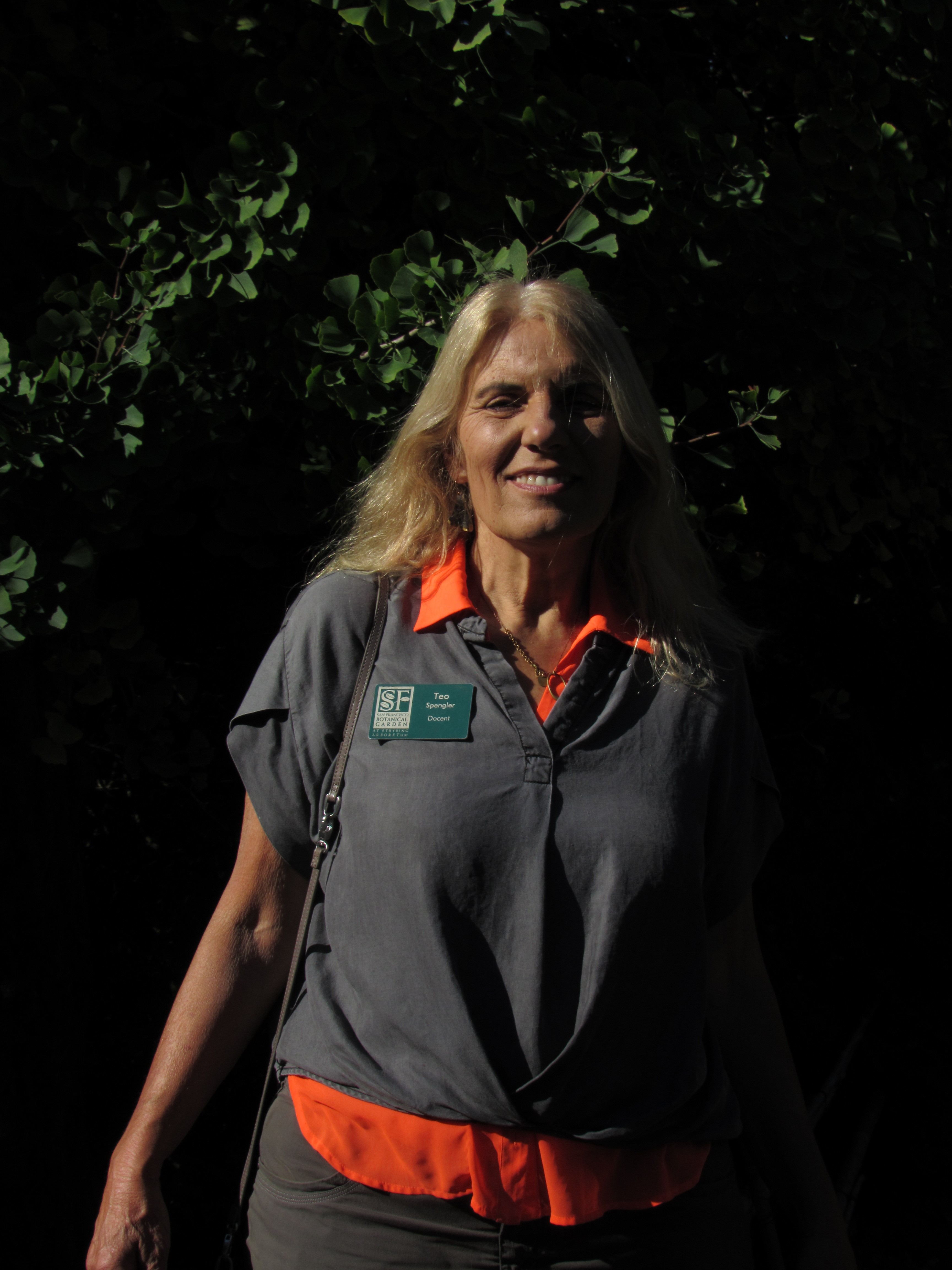Sweet Autumn Clematis Care – How to Grow This Stunning Vine (Without Letting It Get Out of Control)
Sweet autumn clematis have many benefits, including its abundance of beautiful blooms. But it can become invasive. Here's how to grow it safely.

Laura Walters

When it comes to vines, sweet autumn clematis (Clematis terniflora) has it all. It grows fast, climbs fences and walls, and offers masses of small, white, starry blossoms – so many that it’s hard to spot the leathery leaves beneath. Blossoms also attract pollinators, like bees and butterflies. These beautiful flowers can fill an entire wall and the sweet smell will fill your garden.
The good news is that sweet autumn clematis care is not difficult to grow, but it pays to use a bit of caution with this plant. Despite all of its wonderful benefits and beauty, this vine can cause big problems for gardeners and ecosystems if you plant it in the wrong place. Sweet autumn clematis is considered an invasive vine in many states in the eastern half of the United States.
Always check to see if non-native species are problematic to grow in your area before planting them. If you live in a locale where sweet autumn clematis is considered safe to grow, follow the guidelines below for beautiful blooming vines. Plus, I'll share tips to contain the growth of this potentially aggressive plant.
Sweet Autumn Clematis Care
Sweet autumn clematis is about as far from a picky plant as one can get. It thrives in USDA growing zones 4-9, and shoots up a few feet every year, growing to 30 feet (10 m) tall. Established plants can grow as much as 10 feet (3 m) a year.
These are twining vines. They twist their stems and leaf stalks around a support to climb it. Give sweet autumn clematis something to hold onto, like this lovely white arbor from Amazon.
Sweet autumn clematis is happy in full sun, but also in partial shade and tolerates any well-drained soil. Just as most flowers are waning in late summer and fall, the sweet autumn clematis vine lights up the garden with its abundant blossoms.

Planting
Keep in mind the mature size of this vine. It will become massive and the time to put a support structure in place is before planting. A wall or fence works well, but so will a strong trellis or even a lamp post.
Sign up for the Gardening Know How newsletter today and receive a free copy of our e-book "How to Grow Delicious Tomatoes".
Sweet autumn clematis prefers having its head in the sun and its roots in the shade. For the best results, select a planting site with at least 6 hours of sun a day, if possible, and make sure that the soil drains well. Install other garden plants at its base to provide shade to the roots. Mulching works, too.
Watering & Fertilizing
It will come as no surprise that even an easy-care vine like the sweet autumn clematis requires water. It needs about an inch (2.5 cm) a week during the growing season. You can keep the soil moist and the roots cool by applying an organic mulch, like this one from Amazon, around the base all growing season.
It is not necessary to irrigate during dormancy, nor should you fertilize your clematis after the leaves fall. Instead, in the spring apply a low-nitrogen fertilizer, like this 4-10-10 formula you can get on Amazon. Repeat the application every few weeks through July.

Pruning
When it comes to sweet autumn clematis, maintenance is pretty much limited to pruning. But sweet autumn clematis is a big vine, so pruning it is a big job.
You need to prune your clematis to build strong growth and encourage abundant blooming. It’s also useful to balance out the shape of the plant. And pruning can also put the brakes on the invasive spread of this plant.
Pick up the pruners just after the flowers fade. Time the pruning so that it is after the flowering, but before the vine sets seed and prevents self-sowing. It’s also possible and popular to cut back the vine to a few feet above the ground every winter. This can lead to a growth spurt in spring and a profusion of flowers.
If you pass on pruning, your beautiful flowering vine may not look as beautiful the next year. Some vines end up a tangle of stems with bare stems at the bottom and flowers starting well up the plant.

Problems & Potential Issues
Sweet autumn clematis plants are susceptible to a fungal disease called clematis wilt. This includes sweet autumn clematis vines. Clematis wilt can kill the plant. If the vine leaves start looking withered or dark, it’s a sign of wilt. Trim out and dispose of all affected foliage as quickly as possible after spotting the issue. That can often save the vine.
Other diseases that can impact sweet autumn clematis include leaf spot, rust, and powdery mildew. Garden pests like aphids, scale, and spider mites may also attack. Generally, these are not deadly and can be resolved with the appropriate fungicide or insecticide.
Sweet autumn clematis's invasive behavior is a problem in many states. This vine propagates very readily, but deadheading can help. When you deadhead you eliminate the possibility of the plant spreading via seeds.
You also need to watch your sweet autumn clematis closely to make sure it's not escaping your garden bed or spreading to other parts of the garden where you don't want it to grow.
Instead of planting the potentially invasive sweet autumn clematis, opt for a beautiful native lookalike. Clematis virginiana is almost identical and blooms around the same time in late summer to early fall. It's hardy in USDA zones 4-8, and you can find this lovely native clematis on Amazon.

Teo Spengler is a master gardener and a docent at the San Francisco Botanical Garden, where she hosts public tours. She has studied horticulture and written about nature, trees, plants, and gardening for more than two decades, following a career as an attorney and legal writer. Her extended family includes some 30 houseplants and hundreds of outdoor plants, including 250 trees, which are her main passion. Spengler currently splits her life between San Francisco and the French Basque Country, though she was raised in Alaska, giving her experience of gardening in a range of climates.
- Laura WaltersContent Editor